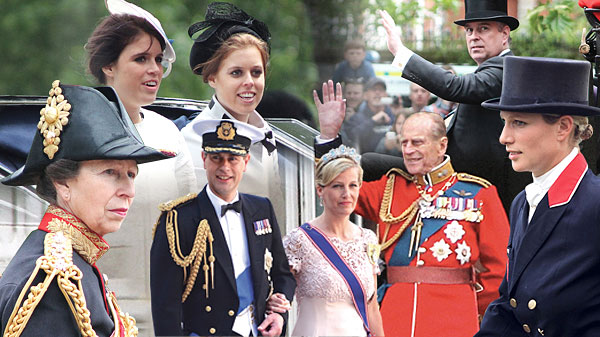
Amid the bunting, badinage and backslapping that greeted the recent arrival of Louis Arthur Charles Windsor, the third child of Prince William and Catherine, Duchess of Cambridge, there might have been one or two royal recesses where the welcome may have been a little more muted. After all, even as the tiny prince was revealed to the world’s press, many of his regal relatives would only be too aware that they had just, once again, shuffled further down the line of succession, with their own ascension to the British throne never less likely.
Not that there’s any likelihood of a current vacancy, however. Despite the sixty-sixth anniversary of her accession to the throne having passed earlier this year, Louis’ great grandmother – or Queen Elizabeth II as she is more normally known – shows no sign of standing down or imminently demising. Given that her own mother lived to be 101, there is every chance that Her Majesty could add another 10 years to her already record-breaking reign. When, as will surely happen in the fullness of time, the British throne does fall unoccupied, though, just who will succeed the country’s longest-serving monarch?
Well, first in line, of course, is Prince Charles who has been the heir apparent since his mother’s 1952 coronation. Given the unprecedented length of her reign, it is perhaps not all that surprising that Charles himself is also the holder of a royal record – at 64 years and counting, he has served as heir apparent for longer than any of his predecessors.

As the eldest son of Prince Charles – the issue of his first marriage back in the days of his apparent fairytale pairing with Diana, Princess of Hearts – Prince William, the Duke of Cambridge is second in line and set to one day succeed his father. With 69-year-old Charles set to be at least 75 or so before he ascends to the throne, it is most unlikely that 35-year-old William will have to spend the same 70-plus years waiting in the wings before the top job falls to him.
In 2013, William and Kate, as she is affectionately known by the public, welcomed their first child – Prince George. Barely had the umbilical cord been cut before the young princeling nosed ahead of Prince Harry – his uncle and William’s younger brother – to become third in line to the throne.

Two years later, the order of succession changed again with the arrival of Princess Charlotte, William and Kate’s second child. This, however, did mark something of a change to royal protocol. Following the 2013 enactment of the Succession to the Crown Act, Charlotte gets to retain her position as fourth in line to the throne even if – as actually happened – another male heir is born in to the family. Just a year or two before, the previously prevailing 1701 Succession Act would have seen Prince Louis leapfrog his sibling and shuffle her down to fifth place in the accession stakes.
Given the abundance of heirs delivered by the union of William and Kate, it seems unlikely – natural disasters and plagues aside – that Prince Harry, now sixth in line to the throne, will ever advance any higher in the monarchy stakes.

Even further back in the list is Prince Andrew, the current Queen’s second son, who has dropped to his relatively lowly seventh ranking. In fact, such is his disposability that he is now no longer regarded as a “core” member of the royal family.
Anne, the Queen’s second child, currently languishes in the largely uncoveted number 13 spot, behind not only her two younger brothers, but also their four children
The highest ranked of these, at number eight, is Princess Beatrice, the daughter of Andrew and his permanently-exiled from royal circles ex-wife, Sarah “Fergie” Ferguson, the Duchess of York. Trailing her in ninth position is Princess Eugenie, her younger sister and the second child of Andy and Fergie as they are familiarly known.

Taking the line of accession into double figures is Prince Edward, the Queen’s youngest son, in the number 10 slot, again placed ahead of his elder sister by a royal tradition that clearly pre-dated any feminist dialogue.
Should some wholly unanticipated cataclysm wipe out the whole of this top 10, however, even then the throne would not go unoccupied. The top 100 extends to various branches of the Yugoslavian and Romanian royal families, with the superiorperks offered to members of the British monarchy sure to lure them out of even the finest palace Bucharest has to offer.
The British royal family, then, is clearly a robust institution, with countless candidates for the top job no matter how great a cataclysm may afflict the realm. With her reign inevitably entering its final phase, however, it will be down to the successors to her title to ensure the role retains its relevance throughout the remainder of the 21st century and beyond.
The full version of this feature appears on Gafencu Magazine’s June 2018 print issue as “Crown Succession” by Hira Desai. You can download the free app for digital editions of the magazine.



